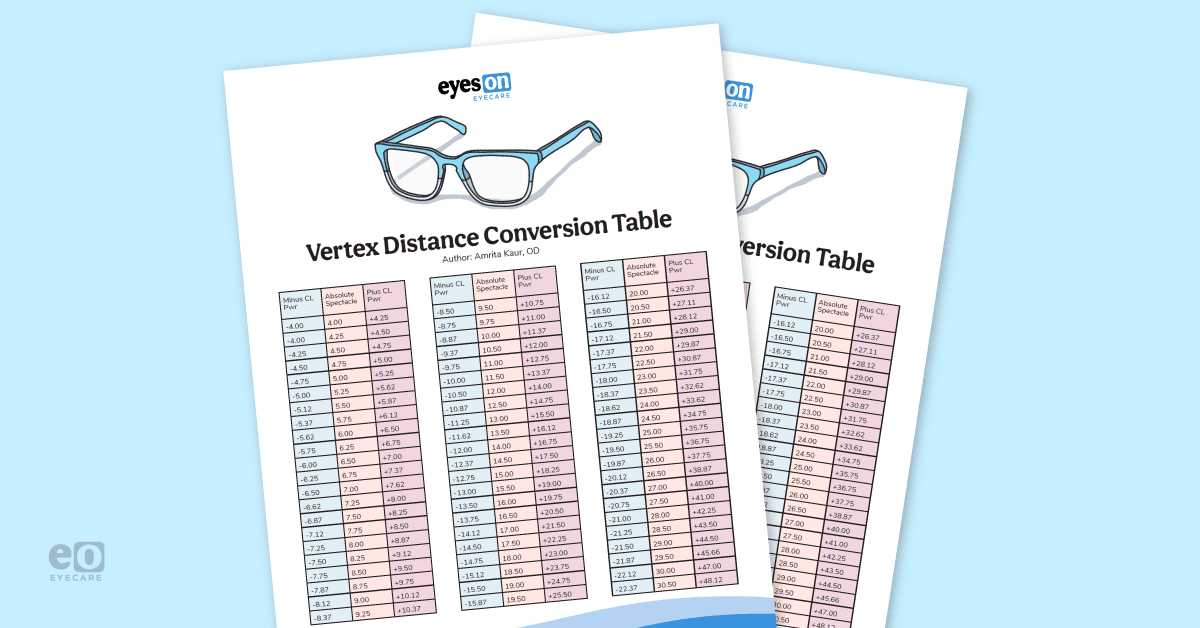We have all had patients ask if their spectacle prescription can dual as a contact lens prescription. Aside from the fact that this cannot work without a proper fitting and evaluation, as eyecare professionals, we know the spectacle prescription does not always translate to the correct contact lens prescription due to the change in vertex distance between the two.
As a major throwback to Optics 101, you may remember this formula:
F2 = F1/ (1-xF1)
F2 (what you are solving for) is the converted diopter power corrected for vertex distance. We can use this formula to solve for F2 whether it is from spectacle RX to contact lens RX, or vise versa.
F1 is the original lens power in diopters, whether it is the contact lens RX or spectacle RX. Be sure to include the appropriate plus or minus sign here.
X is the change in vertex distance in meters. Essentially, this is the distance between where the current lens sits and where you now want it, in relation to the front surface of the eye.
- If you are converting spectacle RX to contact lens RX, or moving the lens closer to the eye, make X a positive value.
- If you are converting a contact lens RX to spectacle RX, or moving the lens away from the eye, make X a negative value.
We would be in the office all night if we had to manually transpose the prescription for every contact lens patient we see amidst our busy schedule, so we have created a “cheat sheet” of already converted values to which you can easily refer!
Download the cheat sheet!
👓
Download the vertex distance conversion cheat sheet
Contact lens fitting isn't an exact science, but this cheat sheet should make the process smoother!
How do you use this cheat sheet?
On the chart, note that the middle columns (yellow) refer to the absolute spectacle lens power in diopters. The left columns (blue) refer to a myopic spectacle RX converted to the respective minus contact lens RX. The right columns (pink) refer to a hyperopic spectacle RX converted to the respective plus contact lens RX. These converted values are based on a 12mm vertex distance and are rounded to the nearest hundredth.
Generally speaking, you do not need to convert the spherical spectacle prescription to a different dioptric contact lens power if the absolute power of the spectacle is ≤4.00. Astigmatism values need to be accounted for separately.
Bear in mind. Just like anything in medicine, contact lens fitting is never an exact formula. The values on this chart serve as guidance, but may not be exactly what the patient prefers. Always remember to over-refract. Every patient preference is unique, and often patients can surprise you with unexpected variations in their spectacle to contact lens prescriptions.
The beauty of contact lens fitting is that it is just as much of an art as a science!
